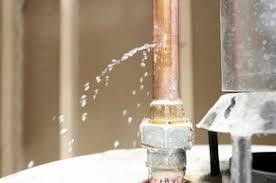Damp in the home is something that nobody wants. As well as looking and smelling bad, damp can also cause serious health issues. Here are some of the most common causes of dampness in the home…
Leaking Roof – Roofs are often overlooked as they are not something that we tend to see much – until there is a problem that is. If you have damage to the roof, either from a storm or just from the roof gradually getting older, then the roof can leak. When this happens, it lets water into the home which can then cause all sorts of issues, including dampness. Something that can help to prevent this is to get a roofer to come and check the roof fairly regularly to make sure that problems can be repaired before this can happen.

Old or Damaged Windows – Windows allow the light to get into our home and also help to keep the home warm. However, if the windows are older or have been damaged, then you may notice condensation forming on the inside of the window.
When this happens, it is time to get a professional like this Cheltenham double glazing company www.firmfix.co.uk to come and replace your windows, otherwise you are at risk of damp forming in the area of the window and spreading.
Faulty Appliances and Plumbing – If you have pipework that is leaking, or you have a washing machine or dishwasher that is losing water from a pipe, then you are at risk of getting damp in the home. If you suspect any plumbing issues, you should get it seen to as soon as possible as this will reduce the risk of damp and stop damp from spreading or getting worse.

Reduced Ventilation – This is a problem that is commonly seen in older properties that have been modernised throughout the years. Many of the features that were traditionally built into an older building and the nature of the buildings themselves meant that there was good ventilation. For example, an open fireplace and chimney was a key part of the building’s ventilation.
However, nowadays, central heating and modern windows that are designed to trap the heat inside are placed into older buildings and this then can cause damp to form if there is not as much ventilation in the building.